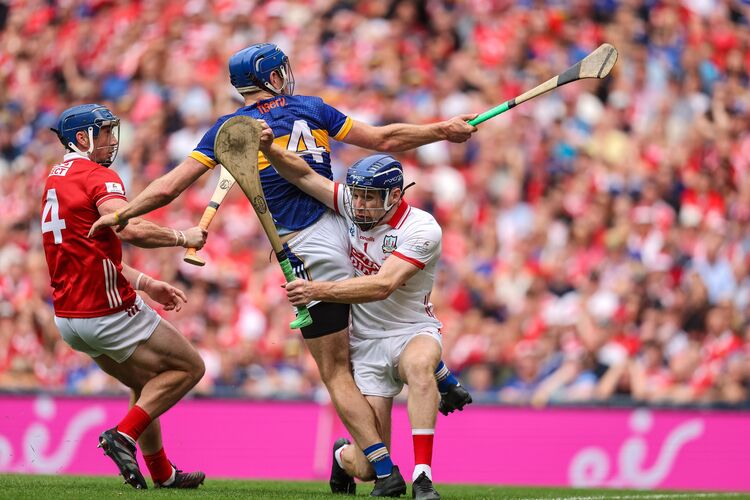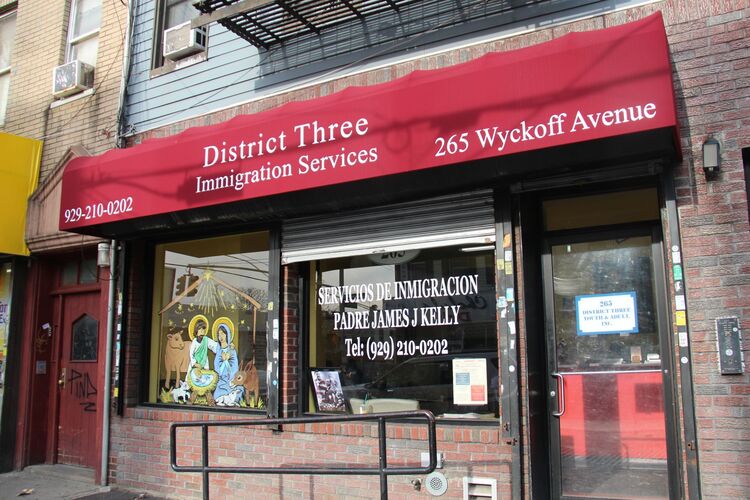The late Maurice “Mickey” Carroll.
Maurice Carroll got his first experience working in newspapers in the summer of 1945 when he was 14 and retired as a reporter and columnist in the summer of 1995. He was then appointed assistant director of the Quinnipiac University Polling Institute and, as the New York Times said in an obituary following his death last week at age 86, he “went on to play a major role in transforming Quinnipiac’s image — from that of an obscure college named for a local Indian tribe into that of a university with a trusted and widely quoted national opinion survey.” Twelve years ago, Carroll spoke to the Irish Echo about his eventful life. We reproduce here the story that ran in the June 15, 2005, issue of the paper.
By Peter McDermott
“There’s no such thing as a political upset,” according to Maurice “Mickey” Carroll. “There’s a badly reported campaign.”
But whereas journalists once called politicians to see how an electoral battle was shaping up, they look now instead to groups like the Quinnipiac University Polling Institute, which the former reporter directs.
Carroll, who was the New York Times City Hall bureau chief in the 1970s and its Albany bureau chief in the 1980s, didn’t always think polling, particularly by newspapers, was such a good idea.
Then, a colleague said to him: “Politicians have this information; we don’t have it. We’re reporting with our hands behind our back.”
“And, reluctantly, I agreed,” he said.
However, by the mid-1990s, when the president of Quinnipiac University in Hamden, Conn., approached him with a job offer, he’d long put aside his qualms about opinion polls.
The president, John Lahey, who was later the New York St. Patrick’s Day Parade grand marshal, was headhunting a pressman who knew more about New York and New Jersey politics than any other – and a colorful figure who could command attention and respect in city newsrooms.
Carroll – who lives on Manhattan’s Upper West Side with his wife, Beth Fallon, the former Daily News and New York Post columnist – frames the polls and analyzes the results.
It’s a task that requires no special mathematical skill; his fellow director, Doug Schwartz, handles the purely scientific end.
“Doug does the numbers and he’s a genius at it,” said Carroll, a graduate of the University of Notre Dame.
Indeed, Schwartz is so good, Carroll joked, Quinnipiac may change its name to the “Definitive Poll.”
Carroll’s career shift occurred after the closure 10 years ago this month of New York Newsday, for which he covered the political scene and wrote a twice-weekly political column.
The Long Island daily’s Manhattan experiment wasn’t the only publication Carroll wrote for that no longer exists.

Mickey Carroll covered the 1960 presidential campaign for the New York Journal-American, one of several major newspapers he worked for in the metropolitan area during his career. This is a scanned image from the edition of Friday afternoon, Sept. 25, 1964. LIBRARY OF CONGRESS
The Rutherford (N.J.) Republican, where he began as a 14-year-old the summer World War II ended, is also defunct, as are the Journal-American and the New York Herald Tribune.
The son of an insurance salesman, the future reporter and pollster was raised with his two sisters in Rutherford, though the family’s origins were in New York’s immigrant melting pot.
“‘A Tree Grows in Brooklyn,’ that’s my background, that’s my mom,” said Carroll, who had two German grandmothers. (His mother recently celebrated her 100th birthday.)
After college he worked for several New Jersey dailies. His first wife, Peggy, was, he said, a “star journalist,” in the state where she and his grown children still live.
He then began to make his way in New York in a profession that at the time was disproportionately Irish and Jewish. “My mentors were usually Jewish,” he said, like Eugene O’Neill biographer Arthur Gelb at the Times.
By the time of the 1960 presidential election, Carroll was working for the Journal American. On Nov. 24, 1963, he was in the basement of the Dallas police headquarters covering the aftermath of the Kennedy assassination for the New York Herald Tribune, when Jack Ruby shot Lee Oswald.
He later wrote a book about the Ruby trial. He collaborated also on another about the Iran hostage crisis with two fellow Times writers.
The reporter, too, experienced the crucible of the Civil Rights struggle in Selma in the mid-1960s, and spent a week on the Robert Kennedy’s whistle-stop campaign train as it went through Nebraska.
Carroll, who loves politics and politicians, didn’t warm to the former attorney general, “though she [Ethel] was fun.”
He referred to one city politician thus: “locked up, went to jail, perfectly lovable guy;” another as a “good guy, I really like him.”
You might end up in prison, he said, if you oppose Rudy Giuliani but “personally, he’s a very nice guy to deal with.” And Al D’Amato is “very likeable.”
He added: “That’s how they get to be a politician.
“Nixon, a terrible man in lots of ways, always nice to me the couple of times I met him,” he recalled.
But it’s a Democrat, and Nixon appointee, who is perhaps Carroll’s favorite of all: Daniel Patrick Moynihan. Personal feelings, though, weren’t allowed to get in the way of reporting.
“Your job is to write what is, and if that hurts a friend of yours, then, too bad,” he said.
Carroll’s philosophy of journalism is nearly identical to Tip O’Neill’s view of politics: it’s all local. And it was also the approach of a fellow New Jerseyan who’d covered the little towns working for the Newark News and then ended up on the White House beat for the Los Angeles Times, when Carroll was covering it for the New York Times. One night his colleague said over a drink: “I think that I can do with this place with what I did with the Parsippany Troy Hills council.”
Carroll laughed loudly, remembering it. “It’s the same thing. It’s easier — the White House gives you transcripts,” he said.
At Quinnipiac, he teaches a class on how to cover a community. And by now, he’s gotten to know all the people who hang around the municipal building in Hamden, the way Jack Ruby did in Dallas.
“Reporters aren’t important; you go to things, you see things,” he said.
Some journalists are worth a mention like Murray Kempton, “who was just a great human being.”
Carroll, though, would prefer to talk about novelists: for example Willa Cather, the greatest American writer in his view, or Anthony Trollope, “nobody better,” or “The Last Hurrah” author Edwin O’Connor.
Yet, he can switch quickly and talk with equal enthusiasm about Quinnipiac’s public-service surveys.
Polling is similar to the news business, he said: “It’s gathering and disseminating information. I think that’s important. And I like doing it.”
And it’s about politics.
He savors the battles due, or likely to take place in 2006 in the states that Quinnipiac specializes in: New York, New Jersey, Connecticut, Pennsylvania and Florida.
But before that, in the last months of 2005, there’ll be the New York mayoral and the New Jersey gubernatorial elections.
How will Quinnipiac deal with the coming campaigns, Carroll was asked. “Well, we will deal with it by my working very hard,” he said, laughing.







